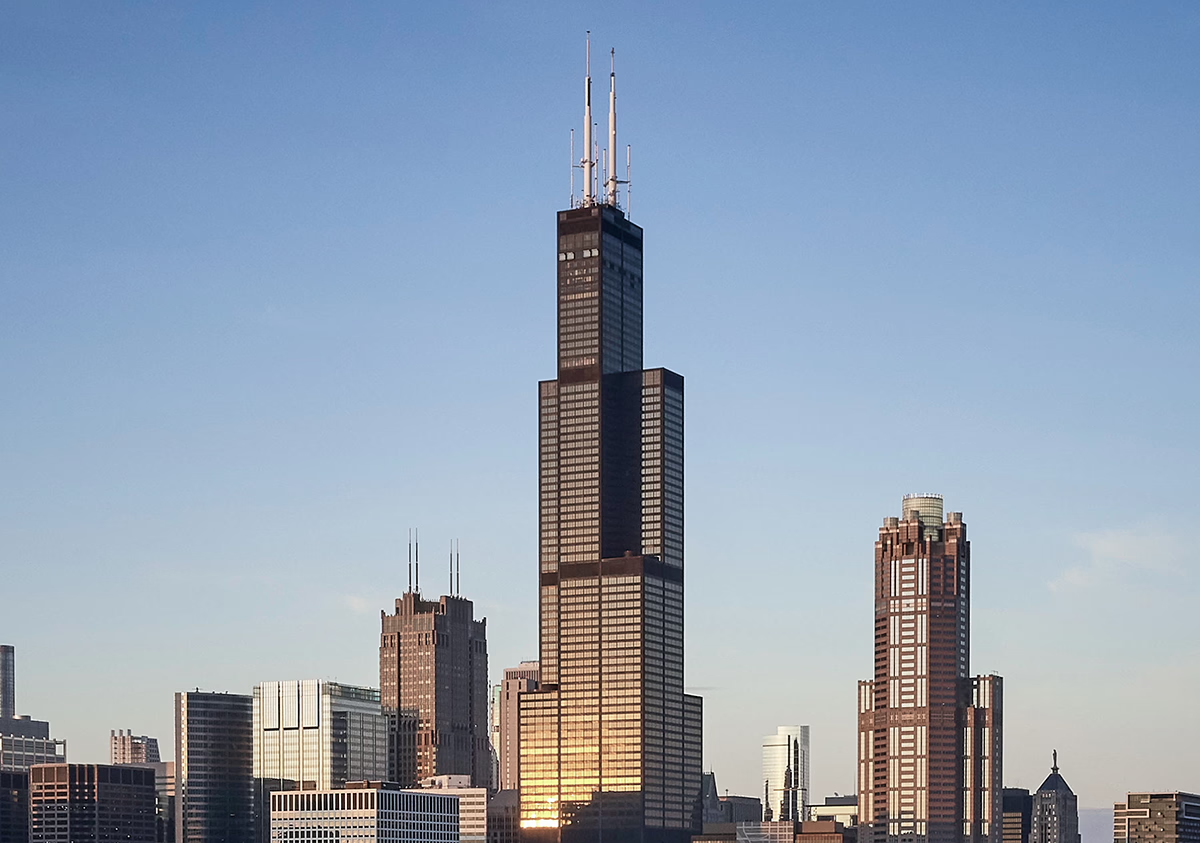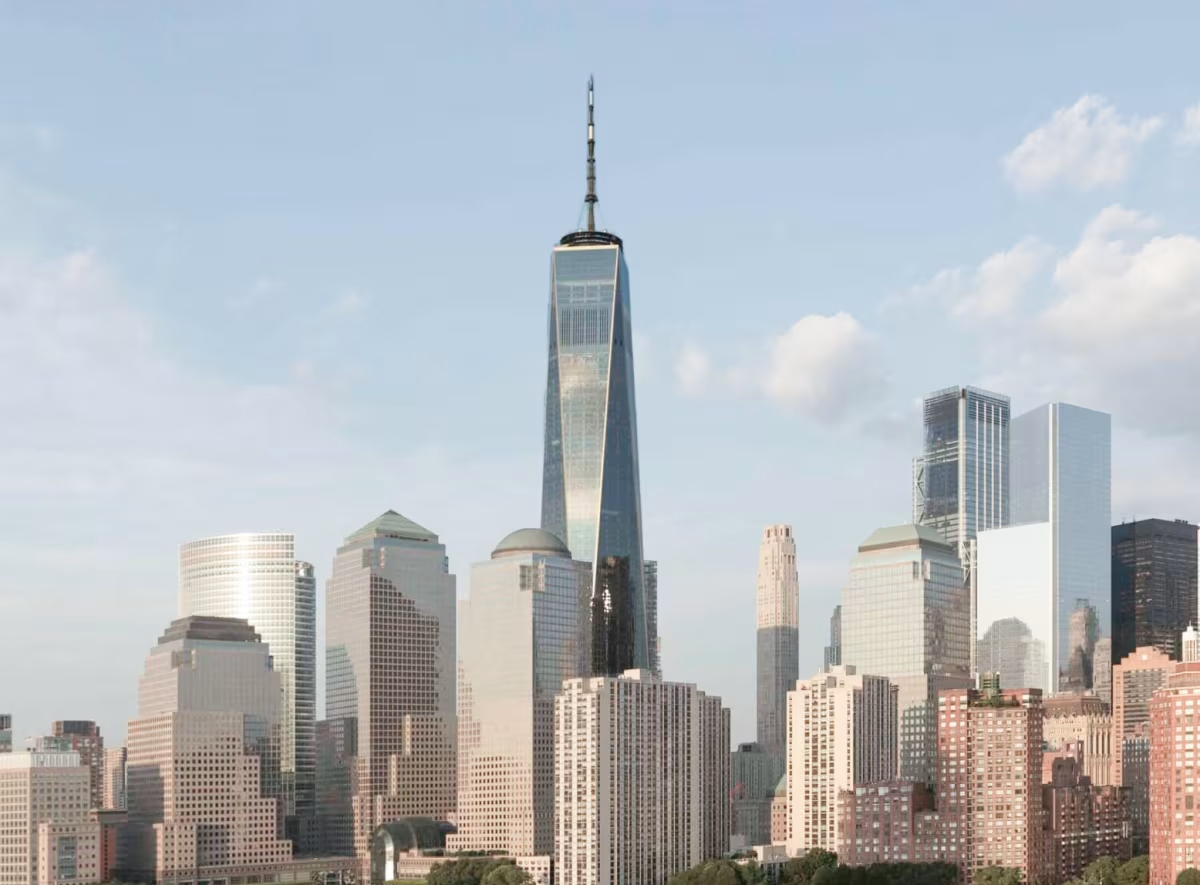Willis Tower vs One World Trade Center


Comparing the Willis Tower and the One World Trade Center is compelling because they were both designed by Skidmore, Owings & Merrill, yet they stand in different cities (Chicago, IL and New York, NY), and were completed over two decades apart.
What this will allow us to see, is how the same firm's approach adapted to different places in different periods of time.
Height & Size
These two towers present an interesting contrast in their proportions. The One World Trade Center rises higher at 1775ft (541m), while the Willis Tower reaches 1450ft (442m). However, the Willis Tower accommodates more floors with 108 levels above ground, compared to 104 floors in the One World Trade Center.
This suggests different approaches to interior space design. The One World Trade Center has an average floor-to-floor height of approximately 5.2m, while the Willis Tower has more compact floors averaging around 4.1m each. The taller building's more generous floor heights might indicate grander interior spaces, higher ceilings, or different programmatic requirements.
These different proportions likely reflect the specific needs each building was designed to serve, whether driven by zoning regulations, client requirements, or the intended use of the spaces within. The contrast shows how architects can achieve different spatial experiences even when working with similar overall building scales.
Architectural Style
The Willis Tower was designed in the International Style style, while the One World Trade Center reflects the principles of Contemporary.
The Willis Tower represents a late expression of the International Style, a style already in decline in 1974 when it was completed. By contrast, the One World Trade Center followed the then mainstream Contemporary, embodying the dominant architectural direction of its time.
With 40 years between them, the comparison also reflects how quickly architectural priorities can shift from one dominant language to another.
Uses
Both the Willis Tower and the One World Trade Center were designed to serve as commercial towers, and that has remained their main use since their completion, serving similar roles in the urban fabric.
Structure & Facade
The two towers rely on different structural systems, reflecting distinct engineering strategies.
The Willis Tower uses a Frame structural system, which relies on a regular grid of columns and beams to sustain its weight, while the One World Trade Center uses a Framed Tube In Tube system, that combines a strong central core with a perimeter tube of columns.
Yet, when it comes to their facade, they both employed the same solution, a Curtain Wall facade.
A curtain wall is a non-load-bearing facade hung from the structural frame. It is anchored to floor slabs and transfers only its own weight and wind loads, allowing for sleek, glassy exteriors.
| Willis Tower | One World Trade Center | |
|---|---|---|
| Skidmore, Owings & Merrill | Architect | Skidmore, Owings & Merrill |
| 1970 | Construction Started | 2006 |
| 1974 | Year Completed | 2014 |
| International Style | Architectural Style | Contemporary |
| Commercial | Current Use | Commercial |
| 108 | Floors Above Ground | 104 |
| 4 | Floors Below Ground | 5 |
| 413 | Last Floor Height | 386 |
| 442 m | Height (m) | 541 m |
| 527 | Tip Height | 546 |
| 418064 | Built-up Area (m²) | 325161 |
| 104 | Number of Elevators | 73 |
| Frame | Structure Type | Framed Tube In Tube |
| Steel | Vertical Structure Material | Steel |
| Concrete | Horizontal Structure Material | Poured Concrete Over Metal Decking |
| No | Facade Structural? | No |
| Glass, Steel, Aluminum | Main Facade Material | Glass, Steel |
| Morse Diesel International | Main Contractor | Tishman Construction |
| Sears, Roebuck & Company | Developer | Port Authority Of New York And New Jersey |
| Westinghouse, Schindler Group And Otis | Elevator Company | Thyssenkrupp |
| Jaros, Baum & Bolles | MEP Engineer | Jaros Baum & Bolles |
| Fazlur R. Khan, Srinivasa Iyengar | Structural Engineer | WSP Group |
| Enclos Corp | Facade Consultant | Isreal Berger And Associates |
| IL | State | NY |
| Chicago | City | New York |
| 233 S. Wacker Drive | Address | 285 Fulton Street |